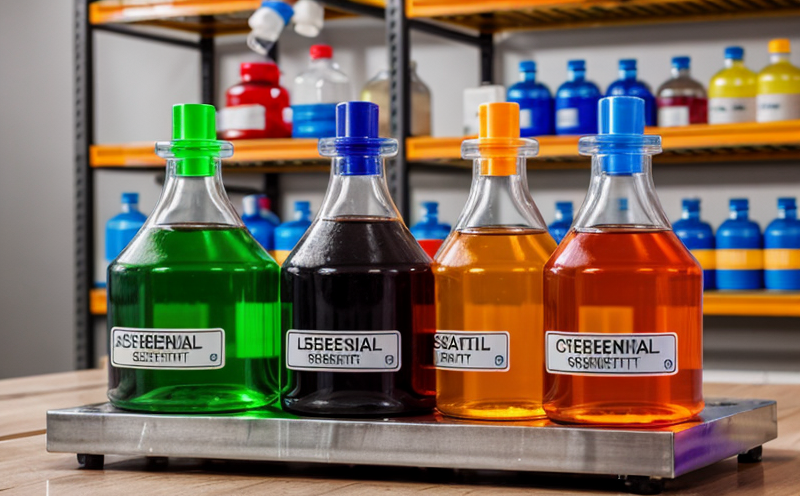Boron Content Testing in Household Products
Boron content testing in household products is a critical process aimed at ensuring the safety and compliance of consumer goods. This service ensures that products do not contain excessive levels of boron, which can pose health risks if ingested or absorbed through skin contact. The presence of boron in certain concentrations is particularly concerning for items used by children, such as toys, bedding materials, and personal care products.
Boron is a naturally occurring element found in many household products, including glassware, ceramics, soaps, and paints. However, excessive exposure to boron can lead to health issues like kidney damage or reproductive problems. Therefore, regulations are in place to limit the allowable concentration of boron in various consumer products.
The testing process involves several steps: sample collection, preparation, analysis using advanced spectroscopic techniques such as Inductively Coupled Plasma Mass Spectrometry (ICP-MS), and finally, reporting results against relevant standards. The international standard for determining boron content is ISO 8572-1:2019 “Consumer Products — Determination of Boron Content in Consumer Products Using ICP-MS.”
Quality managers need to ensure that their products meet these stringent requirements, while R&D engineers must stay updated on the latest methodologies and compliance standards. Compliance officers play a crucial role in ensuring adherence to regulatory frameworks such as the European Union’s REACH (Registration, Evaluation, Authorization and Restriction of Chemicals) directive.
For procurement teams, accurate boron content testing helps identify potential risks early in the supply chain, thereby protecting both their brand reputation and consumer safety. By partnering with a reputable laboratory like ours, businesses can streamline their compliance processes and maintain product integrity.
Why It Matters
Boron content testing is essential for several reasons, including regulatory compliance, consumer health protection, and maintaining a positive brand image. Regulatory bodies such as the European Commission and the U.S. Consumer Product Safety Commission (CPSC) have set strict limits on boron concentrations in household products to prevent adverse health effects.
- Regulatory Compliance: Non-compliance can lead to product recalls, fines, and damage to brand reputation.
- Consumer Health Protection: Excessive exposure to boron can cause kidney problems, reproductive issues, and other health concerns.
- Brand Reputation: Ensuring products are safe fosters trust with consumers and strengthens the brand's image as a responsible corporate citizen.
By conducting thorough boron content testing, manufacturers not only comply with legal requirements but also demonstrate their commitment to consumer safety. This proactive approach helps build long-term relationships with customers and enhances overall market confidence in the product.
International Acceptance and Recognition
The international community recognizes the importance of boron content testing, as seen through various standards and guidelines developed by organizations such as ISO (International Organization for Standardization), ASTM International, and IEC (International Electrotechnical Commission).
ISO 8572-1:2019 provides a robust framework for determining boron content using ICP-MS technology. This standard is widely accepted across Europe and other regions where the European Union’s REACH regulations apply.
In North America, compliance with ASTM F2643-18 “Standard Practice for Determining Boron Content in Consumer Products” ensures that products meet stringent safety standards set by the CPSC. Similarly, IEC 60754 provides guidelines for testing boron content in electrical and electronic equipment.
International acceptance of these standards not only facilitates trade but also promotes best practices in product safety assessment globally. Laboratories adhering to these standards gain credibility, which is crucial for businesses operating internationally or seeking global market access.
Environmental and Sustainability Contributions
- Eco-Friendly Manufacturing: By ensuring boron content does not exceed safe limits, manufacturers contribute to sustainable production practices. This reduces environmental impact by minimizing waste and preventing harmful substances from entering the ecosystem.
- Resource Efficiency: Proper testing helps in optimizing raw material usage, leading to more efficient resource management throughout the supply chain.
- Biodiversity Conservation: Reducing exposure of ecosystems to boron compounds supports biodiversity conservation efforts by preventing contamination and degradation of natural habitats.
Through these efforts, laboratories play a vital role in promoting environmental stewardship. By partnering with us, businesses contribute not only to their own sustainability goals but also to broader global initiatives aimed at protecting the environment for future generations.





